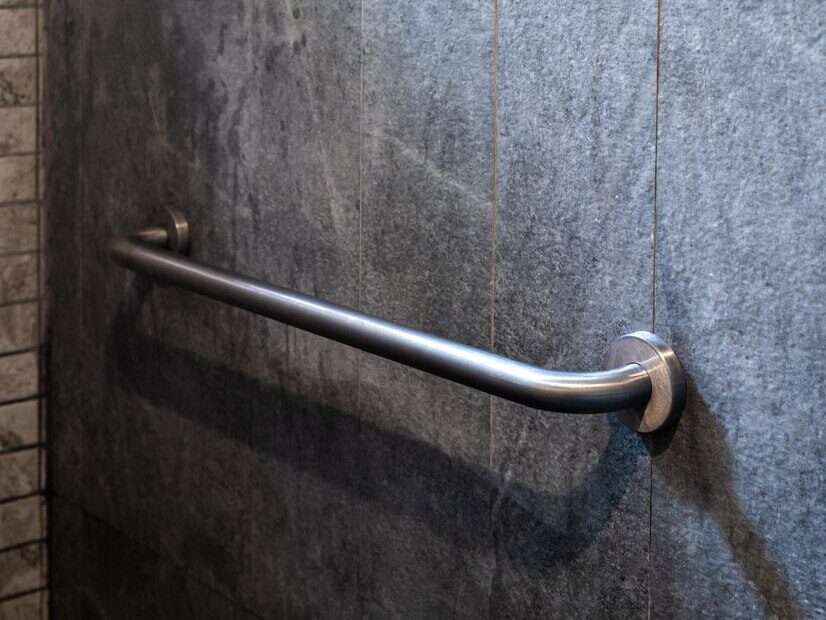How to Combine Function and Aesthetics in Home Design
 Function vs. aesthetics should not have to be a choice. It’s not an either-or scenario. This is especially true in the home design realm. Homeowners should be able to enjoy the most stunning properties imaginable while feeling assured of the most top-notch performance.
In a Texas Gulf Coast region that sees everything from 90-degree temperatures to seasonal tropical storms, this can be a challenge. Fortunately, there are many innovative materials and design concepts that can give homeowners and builders alike a major leg up toward this end. Keep reading as we explore some of the best ways to combine function and aesthetics in contemporary home design.
Function vs. aesthetics should not have to be a choice. It’s not an either-or scenario. This is especially true in the home design realm. Homeowners should be able to enjoy the most stunning properties imaginable while feeling assured of the most top-notch performance.
In a Texas Gulf Coast region that sees everything from 90-degree temperatures to seasonal tropical storms, this can be a challenge. Fortunately, there are many innovative materials and design concepts that can give homeowners and builders alike a major leg up toward this end. Keep reading as we explore some of the best ways to combine function and aesthetics in contemporary home design.
Include an Open Kitchen
The open floor plan is one of the top concepts in modern design.
The kitchen is arguably the most important component for tying it all together.
What once was a closed-in and sequestered space reserved solely for cooking and dishwashing, the kitchen is now the central gathering spot for most household functions.
Mealtime. Hosting and entertaining. Family game night. Homework and business meetings. The list goes on.
When building an open kitchen, the island is foundational. It will serve as the focal point for food preparation and daily dining. It will break up space between the kitchen and the rest of the home.
Because the island plays such a crucial role in open kitchens, it is vital to source the best stone for kitchen countertops. The material should be visually stunning as well as durable and low maintenance. Granite and marble are staple products. They offer a stately stone aspect that immediately arrests the attention of observers. For those homeowners wanting an even lower maintenance option, engineered quartz is emerging. Manufactured from mineral quartz held in place with a tough epoxy resin, the one-piece fabrication of quartz countertops makes them the ultimate in non-porous stone surfaces.
Incorporate Stylish Safety Features
New construction homes are increasingly taking multi-generational living into consideration. It is one of the most common-sense ways for families to combat the rising cost of living.
Since these types of properties accommodate everyone from toddlers to grandparents, safety features must be next-level. Railings around staircases and lofts need to be robust enough to facilitate movement while preventing falls. Glass and stainless steel cable railings are popular in open interiors that require clear sight lines. Correct grab bar placement in showers and around toilets provides safety for the elderly and ADA occupants. Non-slip floor finishes and rounded countertops can limit the frequency and severity of falls.
Plan for the Increasing Role of Noise Mitigation
As mentioned, multi-generational (and multi-family) living is on the rise. With more heads under a single roof, the bustle can become quite clamorous at the busiest times of day. Even if you are designing a standard single-family home, there are still plenty of factors that can cause distracting noise in the household. A few of the most prevalent include:
- Overbuilt subdivisions that have multiple neighbors on small lots
- Increasingly severe weather events resulting in howling winds and forceful precipitation
- Around-the-clock construction and heavy traffic in many neighborhoods
When you consider that people need a more tranquil home environment than ever to accommodate remote work and schooling, the need for sound mitigation becomes readily apparent.
Acoustic wall panels can be added to walls for increased soundproofing mass that helps keep noise local to its origin. A stylish oak sound proof door is an ideal solution to guarantee the tranquility of home offices and bedrooms. Applying an acrylic caulk and adding trim to windows helps eliminate wind whistling through gaps in the window-to-wall transitions.
Choose Engineered Composites When Possible
There is nothing that says “home” quite like rustic materials. Traditional classics such as wood and brick have remained staples in home construction thanks, in large part, to the homey vibes they elicit.
With that said, these types of old-school building materials are rather high maintenance. Wood must be regularly painted (typically every 5 years or so) to maintain appearances and resist damage from moisture and UV exposure. Brick, in addition to being heavy and difficult to work with, should be sealed along a similar timeframe to prevent moisture absorption.
Therefore, modern properties are turning to innovative composites to maximize aesthetic charm while offering next-level performance. Fiber cement siding, for example, can be manufactured in a wide array of the best house colors (including wood-look) to capture the essence of any exterior design theme. Composite roofing tiles, ACM garage doors, and vinyl window frames are examples of other composites that lower maintenance requirements while offering improved long-term performance.
Expertly Balance Form and Function for Next-Level Home Design
Homeowners should not have to choose between a stunning property and one that offers premier functionality. They should be part of the same package. From open kitchens to engineered composites, consider any of the ideas listed above for expertly blending form and function in home design. For more of the latest real estate trends in the Texas Gulf Coast, explore the resources at The Katy News for the leading market insights!
Author’s Bio:
Chuck Waltman is a freelance writer that loves sharing his knowledge and expertise on real estate. He lives in San Antonio, Texas where he enjoys spending time with his wife and researching real estate trends in his free time. Chuck’s work as a freelance writer can be found on Building Product Advisors.
Share this Entry
Business directory
Our Community Partners
 Function vs. aesthetics should not have to be a choice. It’s not an either-or scenario. This is especially true in the home design realm. Homeowners should be able to enjoy the most stunning properties imaginable while feeling assured of the most top-notch performance.
In a Texas Gulf Coast region that sees everything from 90-degree temperatures to seasonal tropical storms, this can be a challenge. Fortunately, there are many innovative materials and design concepts that can give homeowners and builders alike a major leg up toward this end. Keep reading as we explore some of the best ways to combine function and aesthetics in contemporary home design.
Function vs. aesthetics should not have to be a choice. It’s not an either-or scenario. This is especially true in the home design realm. Homeowners should be able to enjoy the most stunning properties imaginable while feeling assured of the most top-notch performance.
In a Texas Gulf Coast region that sees everything from 90-degree temperatures to seasonal tropical storms, this can be a challenge. Fortunately, there are many innovative materials and design concepts that can give homeowners and builders alike a major leg up toward this end. Keep reading as we explore some of the best ways to combine function and aesthetics in contemporary home design.









